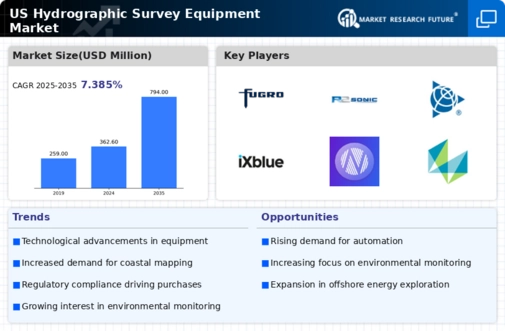The competitive insights of the US Hydrographic Survey Equipment Market reveal a dynamic and rapidly evolving landscape where businesses are continuously striving to enhance their capabilities and gain market share. The market is characterized by a mix of established players and emerging firms, making competition intense. Companies in this sector focus on innovation, technological advancements, and strategic partnerships to meet the increasing demand for accurate and efficient hydrographic surveying solutions. As the need for underwater mapping, environmental monitoring, and resource management grows, firms are addressing diverse requirements across various industries, including marine, oil and gas, construction, and environmental agencies.
The emphasis on data collection precision and the adoption of cutting-edge technologies such as integrated sensors and autonomous vessels highlight the key trends shaping competition within this market.Fugro, a significant player in the US Hydrographic Survey Equipment Market, stands out for its extensive experience and strong reputation in geospatial data services. The company leverages state-of-the-art technology and a highly skilled workforce to deliver reliable hydrographic survey solutions. Fugro's strengths lie in its comprehensive service offering, which includes detailed bathymetric surveys, seafloor mapping, and subsurface investigations.
The company has established a solid market presence through strategic investments in research and development, allowing it to stay ahead of competitors. Additionally, Fugro's commitment to sustainability and environmental responsibility further bolsters its competitive position, as clients are increasingly seeking partners aligned with their sustainability objectives.South Surveying and Mapping Instrument specializes in advanced surveying and mapping technologies, positioning itself as a formidable competitor in the US Hydrographic Survey Equipment Market. The company offers a range of key products and services, including high-precision GNSS receivers, total stations, and underwater survey equipment that cater to various surveying needs.
South Surveying and Mapping Instrument enjoys a robust market presence due to its innovative product lineup and emphasis on quality and affordability. The company has made strategic moves through mergers and acquisitions to enhance its technological capabilities and expand its market reach within the US. Its strengths include a strong distribution network and effective customer support, allowing it to serve a broad client base effectively and respond promptly to the demands of the hydrographic surveying sector.




















Leave a Comment